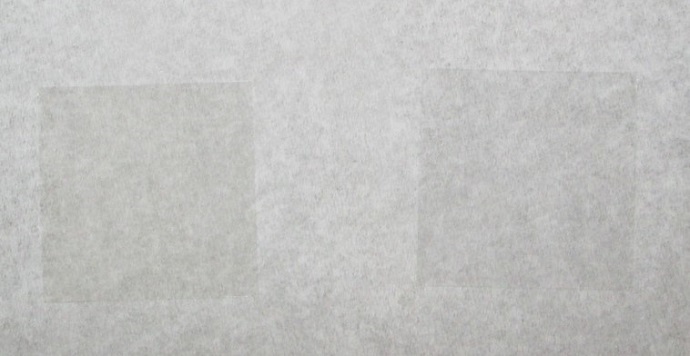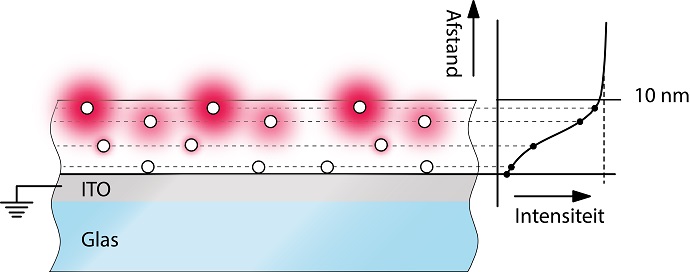January 29, 2016
Researchers from the FOM Foundation and the Department of Imaging Physics at Delft University of Technology (TU Delft) have demonstrated that for a light source at very short distances, 10 nanometres or less, the transparent conductor indium tin oxide (ITO) no longer behaves transparently, but exhibits a strong decrease in the light intensity emitted. This decrease is so strongly dependent on the distance to the ITO that the researchers can use it to measure distances. Using light they can determine distances under 10 nanometres to an accuracy of 0.3 nanometres, which is 1,000 times smaller than the wavelength of the light.

Two microscope slides
Normally they are scarcely distinguishable from each other: two microscope slides one of which is covered with a thin layer of indium tin oxide (ITO) and the other not. The absorption of less than 1 percent light by the ITO cannot or can scarcely be observed by the human eye. The situation drastically changes as soon as the light source is positioned close to the ITO: then the ITO is no longer transparent and the intensity of the light emitted decreases strongly
The absorption coefficient determines how much light a material absorbs. For a material like ITO this absorption coefficient can be made very small, about 0.002 for the ITO that was investigated in Delft. Researcher Dr Robert Moerland, who carried out the research as a postdoc: "This low absorption coefficient means that the thin layer of ITO can provide electrical conductivity, even though normally speaking no more than one percent of the light is absorbed. However if we now place a small light source, such as a light-emitting molecule or nanoparticle, close to the ITO surface then the electrons in the ITO respond strongly to this molecule or particle. As a consequence of this, minuscule flows of current are generated in the ITO. These small currents cannot be measured directly. However, because the electrical resistance of the ITO inhibits this current, that leads to a measurable loss in the quantity of energy that the molecule can emit in the form of light."
The researchers have measured this effect for different distances between the ITO layer and the light-emitting molecules. For this the researchers used atomic layer deposition with which a glass-like layer can be deposited on the ITO with atomic precision. The agreement between the experiment and the theoretical model was so strong that the researchers could very accurately determine the distance between the molecule and the ITO from the quantity of energy loss measured. Research leader Dr Jacob Hoogenboom: "Absorbing materials such as gold or graphene are already used a lot for measuring distances with the help of light. This makes it possible to measure distances of less than 100 nanometres in, for example, biological systems and it provides us with a sort of ruler at the nanoscale. Measurements of less than 20 nanometres are, however, not possible with these materials because then the absorption is too great. Our results have shown that transparent conductors can bridge this gap and make it possible to measure distances down to 1 nanometre. Such measurements do not even require very expensive equipment. Last year some first-year undergraduates used a cheap LED and some equipment we had lying around in the lab to build their own set-up with which they could reproduce these measurements as well."
The results were published on 22 January in the online open-access journal Optic













